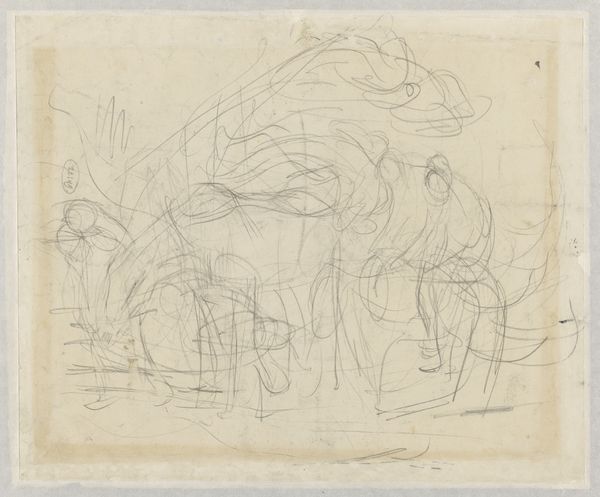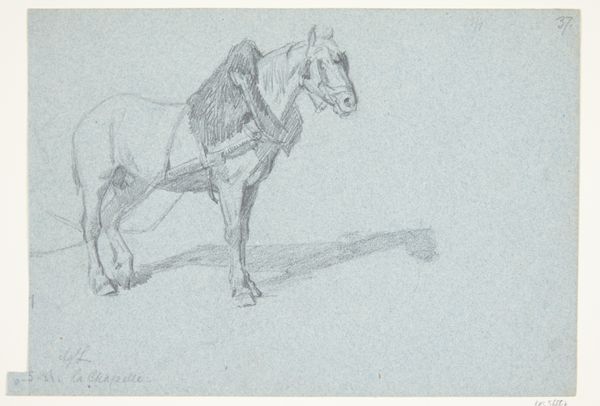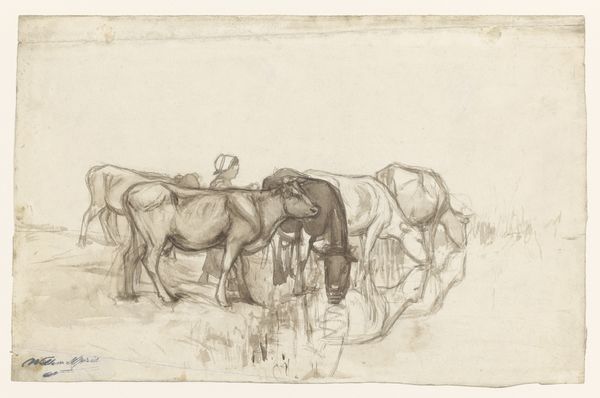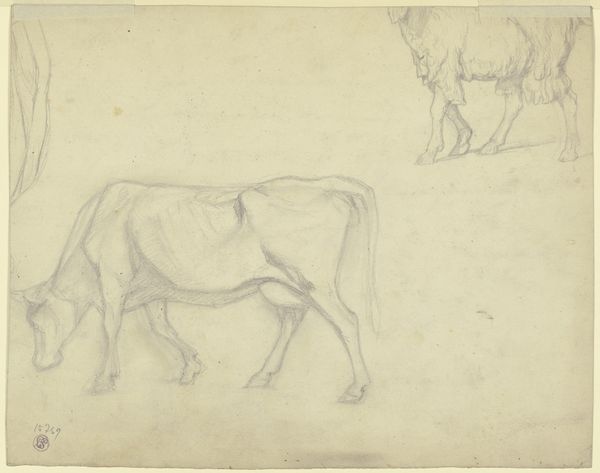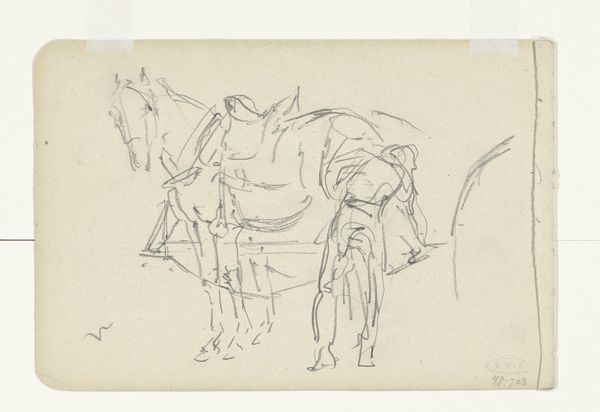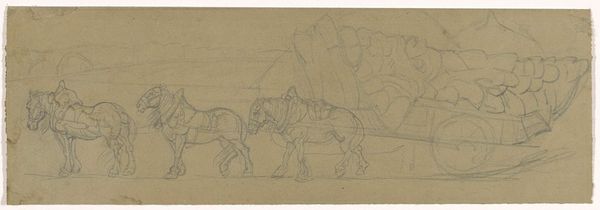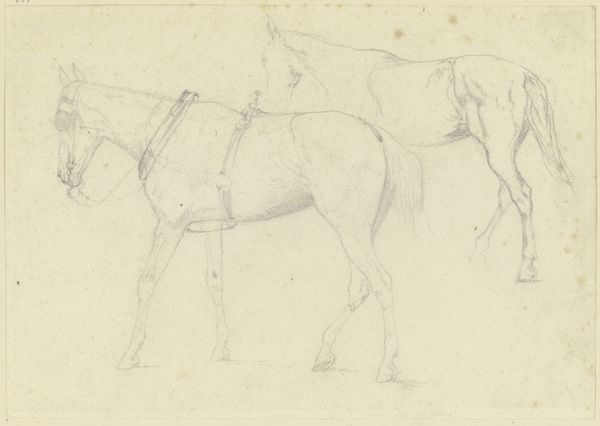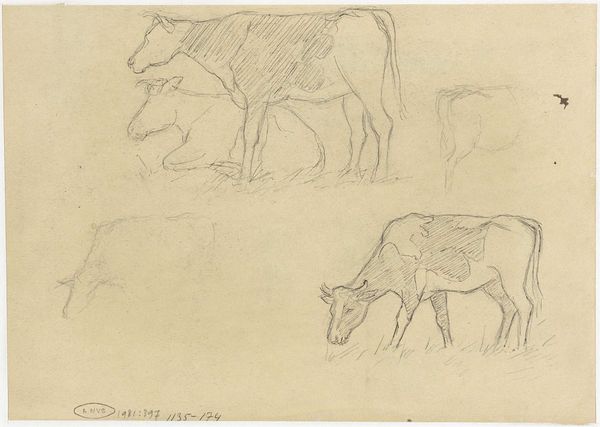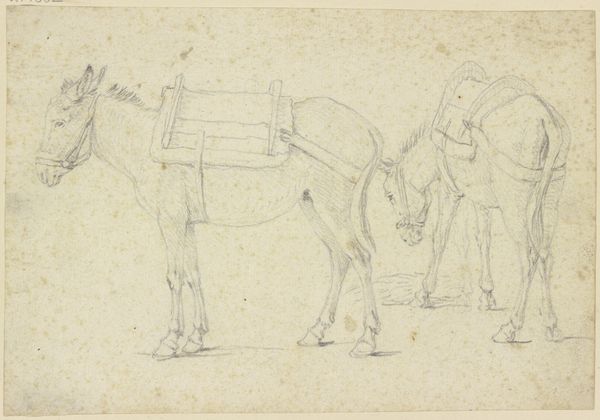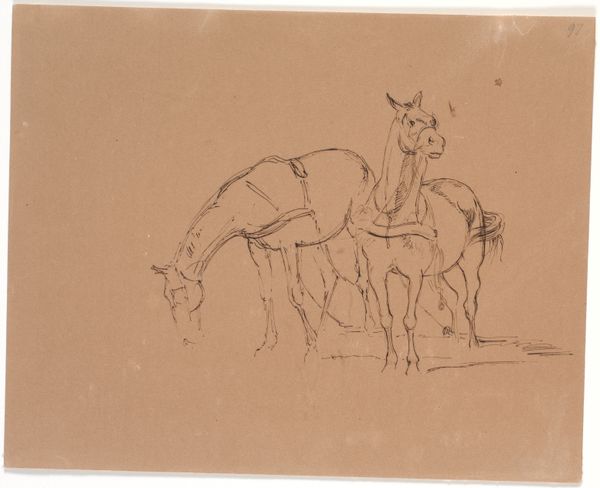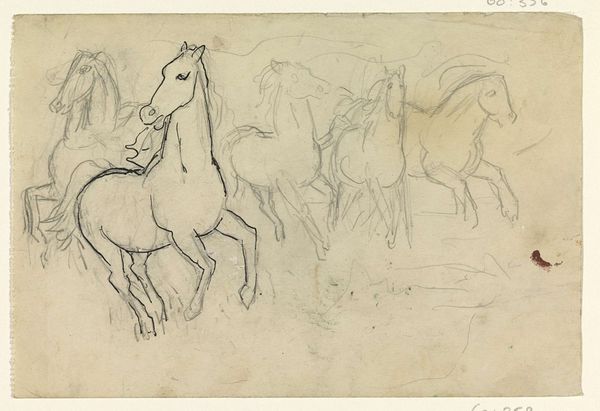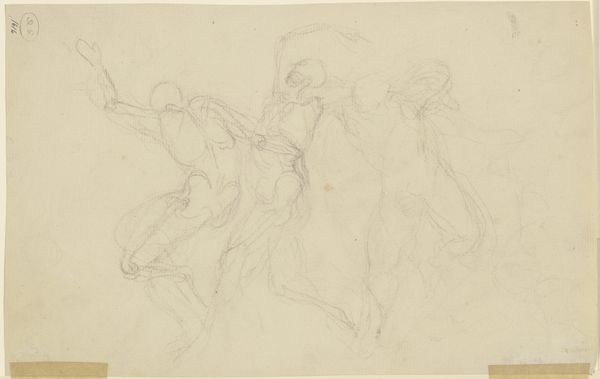
drawing, pencil, graphite
#
drawing
#
landscape
#
figuration
#
pencil
#
horse
#
graphite
#
realism
Dimensions: height 540 mm, width 242 mm
Copyright: Rijks Museum: Open Domain
Curator: Pieter Dupont created this pencil drawing of two horses between 1880 and 1911. It's entitled, "Twee trekkende paarden." Editor: The horses seem to emerge from a haze of pencil lines, with the artist’s grid showing through the drawing. It gives the whole thing a somewhat spectral air. Curator: Indeed, the overlaid grid suggests an academic exercise, a study of equine movement, typical of 19th-century realism. The deliberate precision hints at a society keenly interested in scientific accuracy. Editor: What strikes me is the depiction of labor – those powerful legs and straining muscles tell a story of working animals essential to agriculture and transportation. The material reality is a collaboration between artist, pencil, paper, and these working animals. Curator: That's right, the image certainly embodies the era’s preoccupation with portraying rural life and labor, an idealized vision of nature coexisting with progress—or perhaps, a longing for it. There's often an element of nostalgia in these realist portrayals of animals at work. Editor: Though these are undeniably magnificent animals, I'm curious about the unseen labor of the artist. What social structures made such a drawing possible? How does Dupont’s depiction engage with, or perhaps romanticize, the harsh reality of working-class life at the time? Curator: Those are all very important points. I am especially drawn to how the museum's role in displaying such a piece shapes the legacy and the political message it embodies to present-day viewers. We decide what to showcase. Editor: It's a conversation between labor and artistry, between animals' burden and the artist’s hand. This layered effect of pencil lines builds the strength and feeling of the entire composition. A testimony to collective endeavor, both human and animal. Curator: A potent and layered testament. It offers a quiet commentary on the interplay between progress, memory, and our evolving relationship with the natural world.
Comments
No comments
Be the first to comment and join the conversation on the ultimate creative platform.
